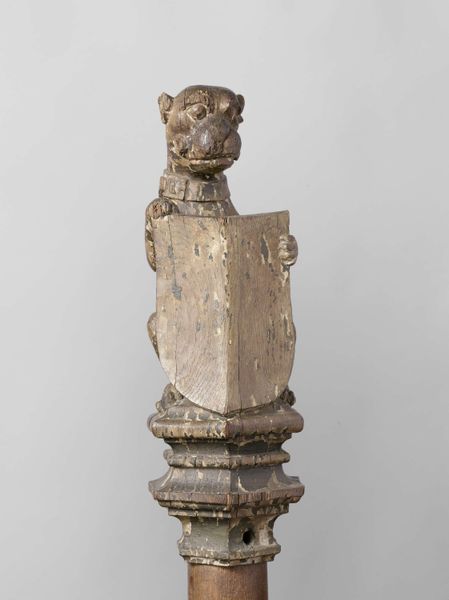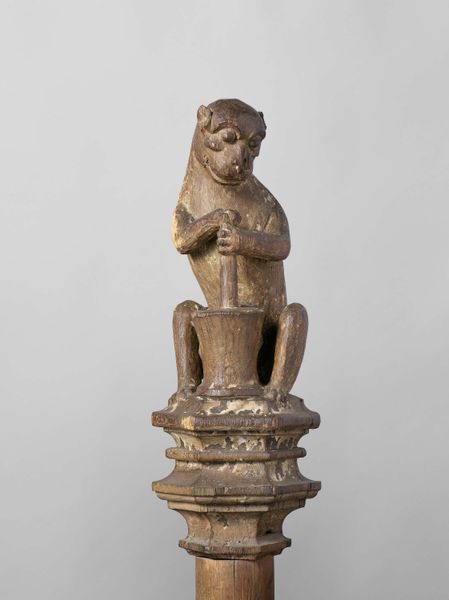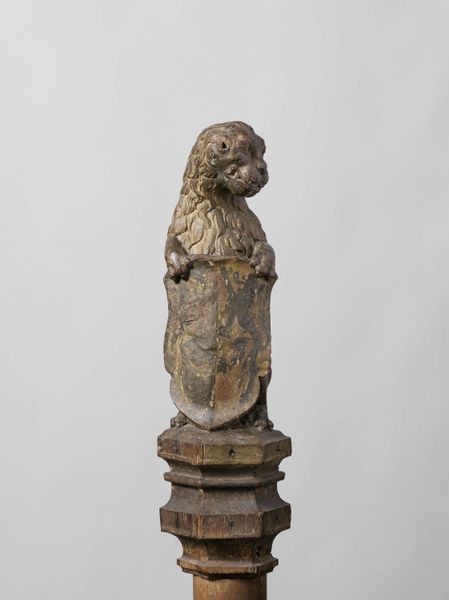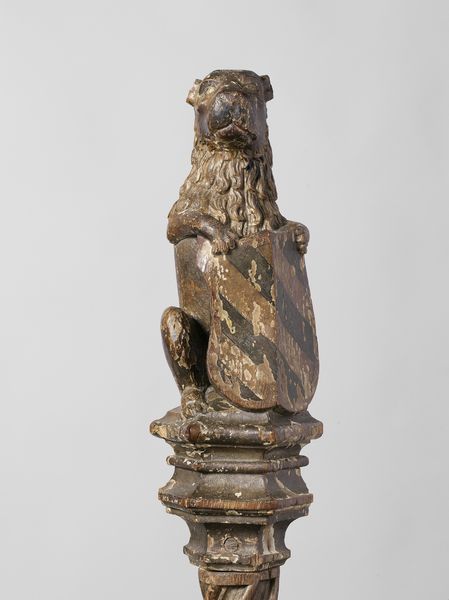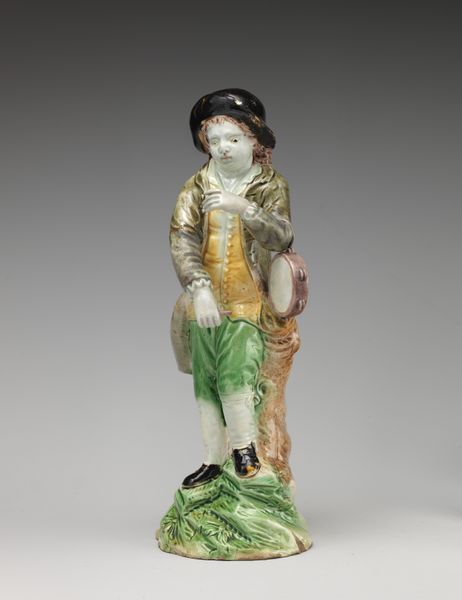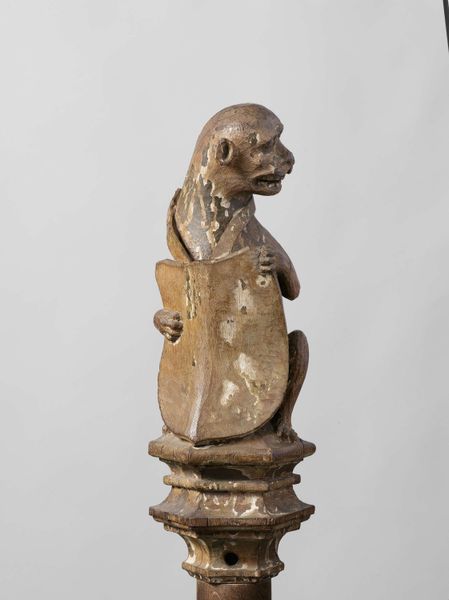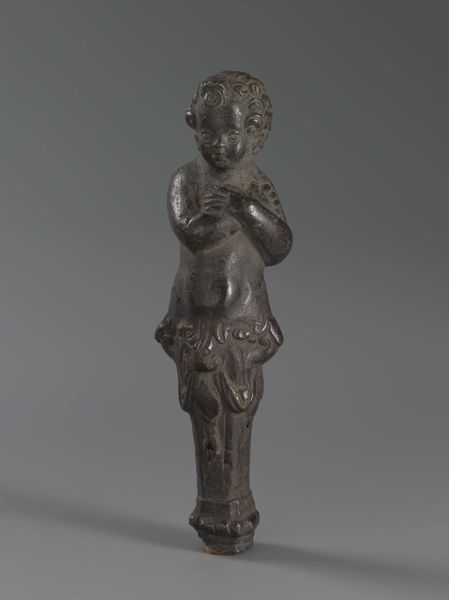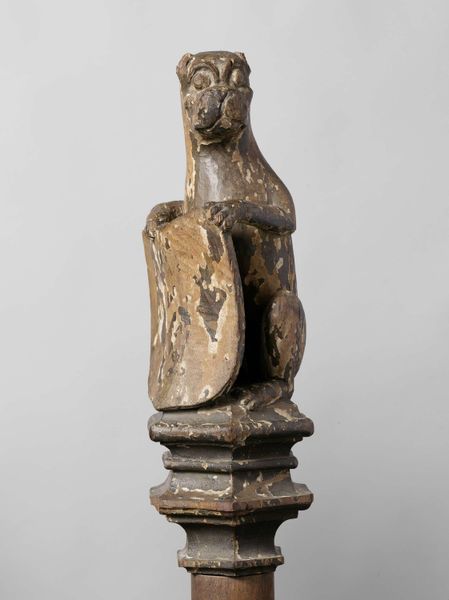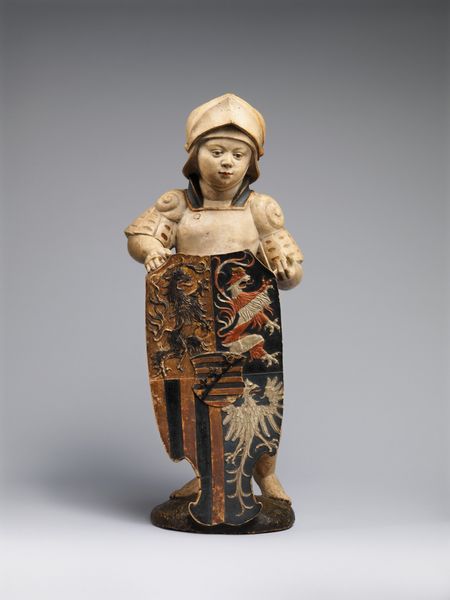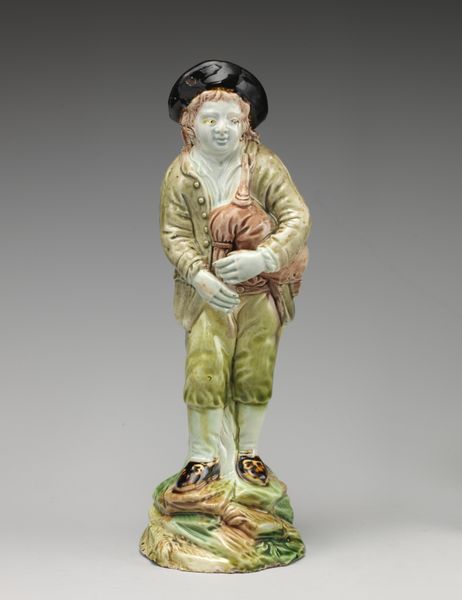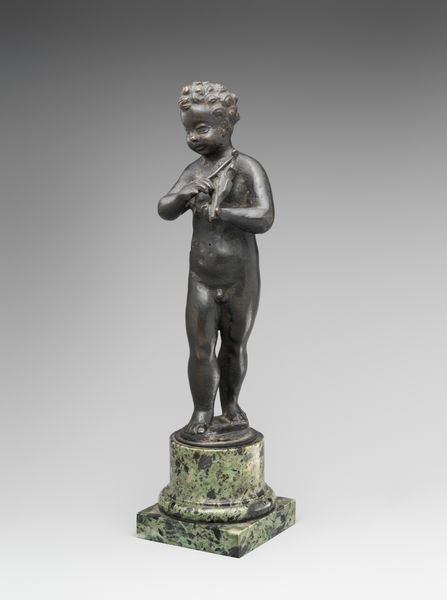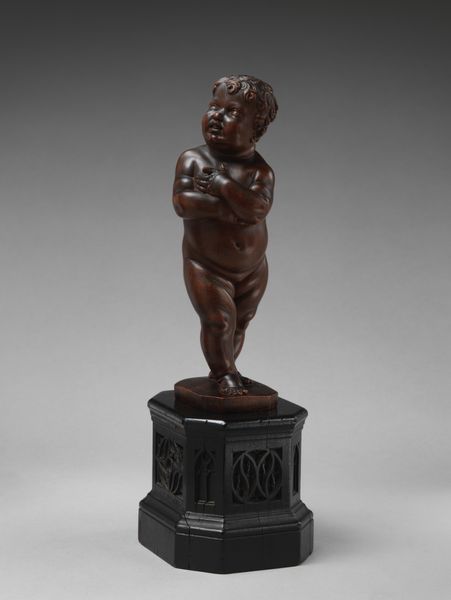
Boy Supporting an Escutcheon, from the Top of a Balustrade or the Backrest of the Stadholder’s Chair in the Rolzaal in the Hof van Holland, The Hague 1511
0:00
0:00
carving, sculpture, wood
#
portrait
#
medieval
#
carving
#
stone
#
sculpture
#
sculpture
#
wood
#
statue
Dimensions: height 55.5 cm, width 17 cm, depth 17 cm
Copyright: Rijks Museum: Open Domain
Curator: Here we have "Boy Supporting an Escutcheon" from 1511 by Joost Janszoon, a carving intended as part of architectural woodwork in The Hague. Editor: It strikes me immediately as endearing, despite the erosion of time. The patina on the sculpture softens what might otherwise be quite rigid, hierarchical symbolism. Curator: The boy’s supporting role is key. He is holding an escutcheon, which in this context would denote family lineage, power and status, so there is this interesting interplay between this child subject bearing weight beyond his years. It makes you question childhood and nobility at the time. Editor: It is indeed interesting that a child embodies what seems like a weighty responsibility. I am curious about the medium. It appears to be a sculpture of painted wood and stone atop a balustrade. Notice how the lines and subtle curves create a sense of movement despite its rigidity. The wood is weathered; I wonder what colours and textures were there in 1511 when it was first made. Curator: Janszoon, like many artists of his time, was grappling with representation. The work points towards the tension between idealized forms, class status, the realities of early 16th-century Dutch court life, and children acting as visible political players, even props. Editor: Yes, there is an undeniable tension between its formal properties—the way the wood has been carved and shaped, the contrasting dark shield against the pale skin and the overall impression it leaves you with – and the social implications you speak of. Its survival over the centuries allows us to view it from multiple vantage points, each lending more layers of meaning. Curator: Thinking about the piece as a whole, from its original architectural location to its current status as a standalone object, changes the dialogue surrounding it and gives this youthful figure new voices. Editor: Indeed. Studying “Boy Supporting an Escutcheon” reminds us that even seemingly static objects have evolving meanings, continually shifting with each observation.
Comments
No comments
Be the first to comment and join the conversation on the ultimate creative platform.

